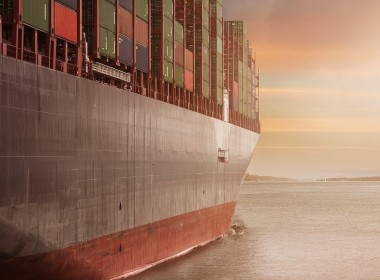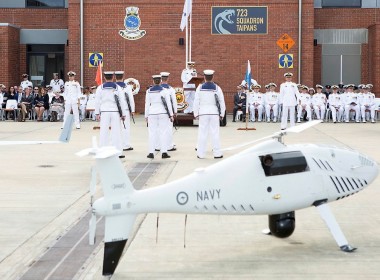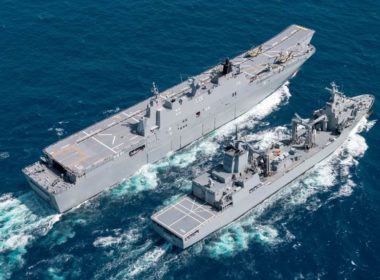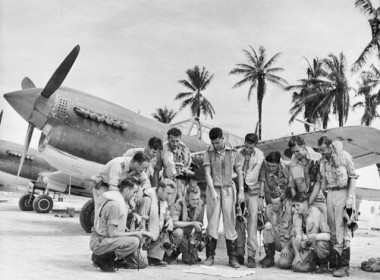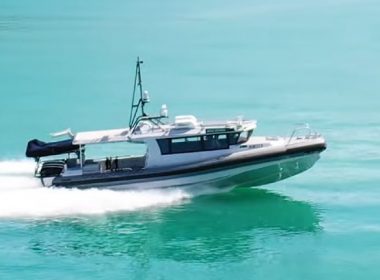OPINION | War risks to Australian maritime trade

If push comes to shove between China and the United States, Australia’s international trade with Asia is at risk of becoming collateral damage.
The sea routes through Indonesia and to Asia around the east of Papua New Guinea account for 90 per cent of Australia’s sea-borne exports and 83 per cent of its imports.
Last year’s Defence Strategic Review identified the defence of trade routes as a priority. Australia was at little risk of invasion, but adversaries could exercise military coercion at a distance by targeting Australia’s trade, it said.
A new ASPI Special Report, The trade routes vital to Australia’s economic security, identifies the narrow shipping channels through Indonesia as the most vulnerable choke point for Australia’s trade. They carry about two-thirds of Australia’s exports, including all its iron ore and most of the west-coast liquefied natural gas, while they are also the route for 40 per cent of our imports.
“While Australia’s trade would be seriously damaged by any blockage of the Indonesian shipping channels, so too would the trade of China.”
The Malacca Strait between Indonesia and Malaysia is the main route for shipping from the Indian Ocean trading with Asia. It carries about 80,000 ships a year. If it were blocked—and it’s only about 15 kilometres wide alongside Singapore—all that shipping would be rerouted around the south of Australia, travelling past the east of Papua New Guinea.
The Malacca Strait is used by most container and vehicle ships coming to Australia from Europe, although since the attacks by Houthi militia in the Red Sea, more are travelling around South Africa’s Cape of Good Hope and directly across the Indian Ocean.
The route to the east of Papua New Guinea is taken by most containerships coming to Australia from North Asia and also Australia’s coal ships supplying Asia.
Once ships from Australia reach North Asia or pass through the Indonesian archipelago, they enter the busiest shipping lanes in the world. The ships carrying Australia’s bulk commodity exports are a significant presence: it’s estimated they account for 29 per cent of global bulk shipping, however the eight million containers handled each year at Australia’s ports are less than one per cent of the global total.
The report notes that while Australia’s trade would be seriously damaged by any blockage of the Indonesian shipping channels, so too would the trade of China. China depends on maritime imports for 80 per cent of its iron ore, 70 per cent of its oil and 35 per cent of its protein.
US strategic analysts have explored the option of a distant blockade of China’s maritime trade using the Malacca Strait to interdict commercial shipping.
However, international trade has a proven resilience in the face of military disruption. While the Houthi attacks since October have halved the flow of ships through the Suez Canal, they have had little measurable effect on global trade flows.
Ukraine is managing to ship high volumes of grain and other goods across the Black Sea in the face of Russian attacks by devising a route that hugs its coast and then the coasts of NATO members Romania, Bulgaria, and Turkey. It has been helped by the British government subsidising war-risk insurance.
Military defence is important: Ukraine’s resumption of shipping through the Black Sea following the collapse of a UN-brokered grain-shipping deal with Russia has been helped by Ukrainian attacks on Russia’s navy.
However, it is essentially the prospect of profit that keeps the merchant fleet moving.
“The provisions in the Defence Act for requisitioning shipping in war-time were drafted in 1903 in the wake of the Boer War and need to be updated.”
The availability of alternative sea-routes is one source of the resilience of trade: if one channel is blocked, there is usually another way around it. The provision of war-risk insurance is another. Ship owners and operators will weigh the cost of insurance against the expected profit from the trip.
The competition between shipping lines is also important. The oil tanker business is hugely competitive: the top 30 companies control less than half the global capacity. The operators of a ship that turns down a cargo because the route is too risky can be sure that a competitor will pick it up.
Bulk shipping is even more competitive, with the top 20 companies operating barely a quarter of the global fleet. Container shipping is a lot more concentrated, with the top five companies accounting for two-thirds of global capacity.
Container ship operators were quick to stop using the Suez Canal after the Houthi attacks began, with traffic at the end of January down by two-thirds from a year earlier. The cost of the detour around Africa was passed on to customers.
In the much more competitive oil tanker business, traffic was only down by 18 per cent, while for bulk shipping the fall was only six per cent, according to analysis by the UN Conference on Trade and Development.
The ASPI report calls for the Australian government to review the security of Australia’s container shipping supply, noting that the country has the advanced world’s highest dependence on manufactured imports, most of which arrive by container.
Australia is a high-cost route for the container lines, as it has relatively low volume, is not on the way to anywhere else, and up to half the containers that arrive in Australia full leave empty.
There has been no official review of Australia’s shipping routes since one was conducted by the forerunner of the Bureau of Infrastructure and Transport Research Economics in 2007, which was based on data from 2001 to 2004. The direction of Australia’s trade has changed dramatically since then, and the ASPI report calls for the government to fund an update of the official report.
The ASPI report also says the government should prepare contingency plans for supporting the provision of war-risk insurance to ships trading with Australia in a time of conflict.
There should also be planning for emergency chartering of shipping. The provisions in the Defence Act for requisitioning shipping in war-time were drafted in 1903 in the wake of the Boer War and need to be updated.


